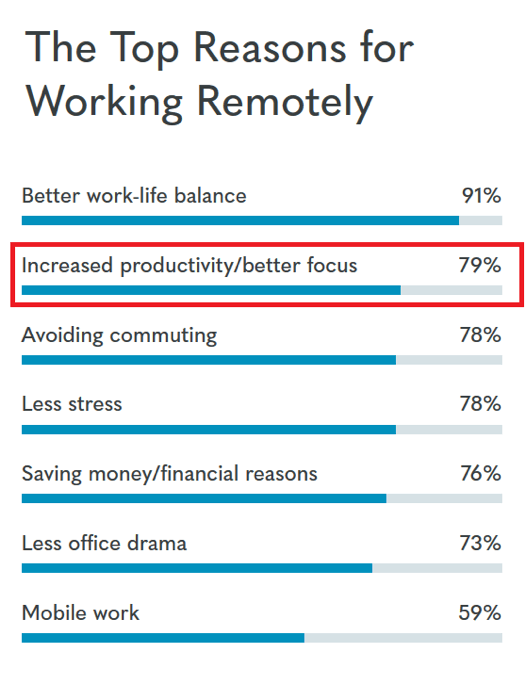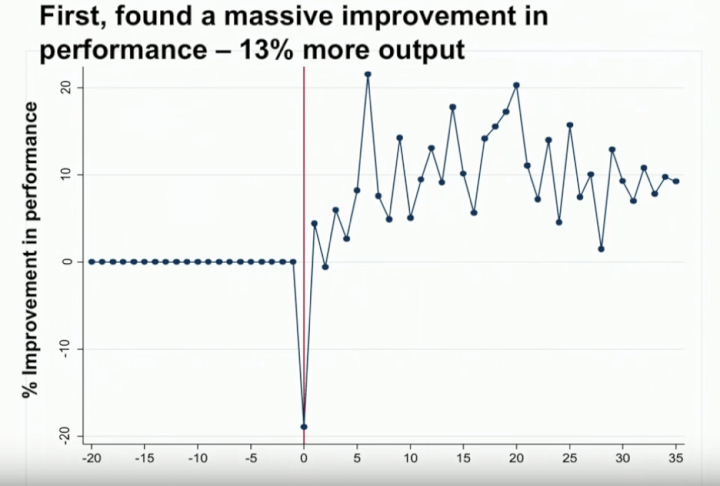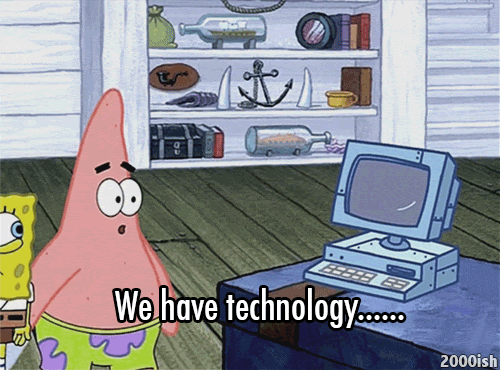At the time of writing this, businesses of all sizes around the globe are scrambling to keep things moving in the right direction while dealing with the Coronavirus lockdown.
For many, if not most, the go-to solution has been to transition to remote team management across the board. While perhaps not ideal for some organizations, this certainly beats the alternative of shutting down entirely at the risk of losing everything.
To be sure, the glass-half-full outlook on all this is that modern business owners and managers are lucky enough to live in a time where operating remotely is even an option in the first place.
Still, making this shift—especially during such hectic and uncertain times—can be pretty challenging. Heck, even if we weren't currently in the midst of a global crisis, shifting from traditional to remote team management isn't exactly straightforward.
But:
That doesn't mean it's not worthwhile to do so.
In this article, we'll dig into the challenges many organizations face as they make the transition to managing teams remotely—and discuss what you can do to overcome these obstacles within your own company.
First, though, let's take a look at some of the key reasons you should be shifting to remote team management regardless of the COVID shutdown (or any other factors that are beyond your control).

The key benefits of remote team management
Like we said, our current reality is that many organizations have been forced to make the shift to remote work in order to keep the ball rolling.
And, admittedly, this may be a less-than-ideal scenario for a vast majority of these companies.
On the other hand, there are a great many organizations that had already been operating remotely—either in part or entirely—well before the global shutdown began.
The reason these companies had taken this route from the get-go?
Because remote work is a win-win for both employees and employers.
Case in point:
Remote teams are highly productive
Remote operations typically lead to higher productivity levels for both individual employees and teams as a whole.
According to a 2019 study by Owl Labs, 79% of remote workers surveyed said the reason why they work remotely is because they're able to be more productive.

Stanford professor Nicholas Bloom affirms this feeling of improved productivity through evidence from a test study done with James Liang, co-founder, and CEO of travel agency Ctrip. The study found that those selected to work from home were 13% more productive than their counterparts who worked in the office.

This increase in productivity translated to Ctrip getting almost an extra workday a week out of their remote workers.
Looking at the big picture, Global Workplace Analytics estimates that if half of the US workforce were to work remotely half of the time, it would lead to an increase in productivity levels equal to five million man-hours. This equates to an astounding $270 billion in added value to the overall economy.
There are several reasons for all this, including increased flexibility, fewer distractions, and less time spent on menial tasks and downtime. We'll get more into this in a bit, but for now, just know that operating remotely will almost lead to higher productivity levels for your organization.
Remote teams are efficient (and cost-efficient)
With increased productivity typically comes increased efficiency and cost-efficiency.
And this is the case when it comes to remote companies.
For one thing, managing a remote team just costs less than leading an on-premise group of employees. Think about it: You won't be spending money on office space, furniture, equipment, and most other physical aspects common to the traditional way of operating. Remember the study we discussed above by Professor Bloom in conjunction with the travel agency Ctrip? The company estimated that they were able to save up to $1,900 per employee in just nine months by having employees work remotely due to the savings in space and furniture.
In terms of operational efficiency, remote workers are often better equipped to take care of specific needs as they arise—again, without much downtime in between. As the old saying goes, time is money; the more responsive your remote employees are, the lower your overall costs of operations will be.
Remote operations enable the acquisition of top talent
Logistically speaking, operating remotely means you'll be able to search far and wide for highly-talented and qualified individuals to bring into your organization.
(Conversely, if you operate strictly on-premise, it may be a bit more difficult to recruit talent outside of your general area.)
Even putting logistics aside, the fact is that high-quality candidates are drawn to companies that allow for and enable remote work:

- 70% of employees say the option to telecommute is "somewhat" or "extremely" important when looking for a new job
- Millennials rate flexible work arrangements as an 8 out of 10 in terms of importance when looking for a job
- 78% of college graduates prefer the flexibility of remote work versus the more rigid nature of the traditional workplace
It's simple:
Organizations that offer remote working options—or that operate remotely as a matter of course—are much more likely to attract high-quality employees than those who do not. To be sure, it's pretty safe to say this trend will continue well into the future.
82% of employees say that being given the option to work remotely has a significant impact on their propensity to be loyal to their company.
Remote operations lead to increased employee retention
Okay, so we've established that the modern employee prefers to work for organizations that offer the ability to work remotely.
And, the modern employee knows that working remotely allows them to put their best foot forward, and complete their duties to the absolute best of their ability.
So, it just makes sense that these individuals are going to be more likely to remain loyal to the organization that makes all this a reality for them.
Of course, this isn't just conjecture.
As Owl Labs' study points out, 82% of employees say that being given the option to work remotely has a significant impact on their propensity to be loyal to their company. Additionally, 95% of employers say that giving their team members the option to work remotely has positively impacted their ability to retain high-quality employees.

The challenges of managing remote teams
From pretty much every angle, it's clear that shifting toward remote operations—at least in some capacity—will benefit your employees, as well as your business as a whole.
Still, making this shift will also come with its fair share of challenges that you'll need to overcome to reap the benefits of doing so.
For example…
Managing and maintaining employee engagement
Obviously, remote teams don't operate under a single roof.
It's more likely that each team member is isolated from one another in a physical sense. This can make it difficult for managers to maintain visibility of all team members at a single time.

To add to this, each remote worker's environment is different in many ways. Whether they're working from home, a shared workspace, or the nearest Starbucks, your employees will likely face their unique distractions that stem from their work environment.
(Looking at this from the other side, if they were to all work under the same roof, you'd have much more control over their overall work environment—and could eliminate universal distractions as needed.)
Tracking employee productivity
In the same vein as the above, it can also prove to be more challenging to track your remote workers' productivity levels on a ground-level basis.
Since your team members will have more flexibility concerning how and when they work, you won't be able to take an "umbrella" approach to monitor them as they work. Again, this is in stark contrast to the traditional scenario in which all employees work the same hours in the same place—making it easier for you to observe and keep tabs on them all at once.
All operations involve a ton of moving parts. With remote operations—in which employees complete their work on their terms (within reason, of course)—there's the added layer of having to keep track of each employee to ensure they're completing their tasks as expected.
While not impossible (as we'll get to momentarily), this certainly does pose a challenge for companies making the transition to remote operations.
Use of technology and other resources

Remember earlier on, when we said that allowing for remote operations is more cost-efficient due to a reduced need for specific resources?
Well, it's a double-edged sword in some cases.
Since your employees will be working from their home or another choice of workplace, you'll have less control over the resources they have available to get their work done. As a simple example, an employee working from Starbucks will be at the mercy of the coffee shop's WiFi—which may or may not be so reliable at times.
Similarly, any problems your employees encounter with their equipment—even tools that you provide them—may be more challenging to solve than if they were to meet them on-premise. And, in worst-case scenarios, your employees may face some significant downtime if they need to send their equipment to your IT department (or have the IT department send them a replacement).
Communication barriers
With remote team members being spread so far out—potentially all over the globe—several communication-related issues are bound to spring up.
For one thing, since your various team members may be working at different times, team-wide communication in real-time may be somewhat difficult, if not impossible. This issue is only made worse when team members live in vastly different time zones.
(It's not likely that your employees working halfway around the world will want to attend meetings in the middle of the night, right?)

Technological glitches can pose yet another problem here, as well. Even if your team members are available for meetings and whatnot, spotty WiFi and other such issues may hinder their ability to communicate effectively with each other.
Finally, if you've recruited high-quality employees from around the world, there's a decent chance that language barriers will pop up from time to time. While this is true for traditional organizations, as well, it's even more likely for remote organizations to face this issue to some degree.
Building a company culture
Going along with communication barriers, it can be difficult for remote teams to come together as a team in terms of creating a culture.
Since remote employees often work in isolation and "do their own thing," it can be easy to fall into the trap of only engaging with other team members on an as-needed basis.
Unfortunately, this often leads to less camaraderie between individual employees, and a lack of shared vision throughout your organization. Worse yet, it can cause miscommunications and misunderstandings between team members that can potentially grow into more significant disputes, overall.

8 strategies for managing remote teams
It's essential to keep in mind that the challenges we mentioned above are just that: challenges to be faced, and ultimately overcome. Will it require some effort on your part and that of your team members? Absolutely. Is it impossible to overcome them? Absolutely not. (If they were impossible to beat, the benefits we spoke about earlier wouldn't exist, right?)
That said, let's dig into some of the key ways you can approach these challenges strategically to get your remote operations up and running productively and efficiently.
Hire the right talent
Okay, you probably didn't need us to tell you that hiring the right people is vital to the success of your business—whether operating remotely or not.
The question is, though: What does the "right" remote employee look like?
Autonomous
Since you, as a manager, will have a lot less hands-on time with your remote employees, you need to be confident that they can do what needs to be done with as little "hand-holding" as possible.
For starters, your remote workers need to be doers. That is, they always do what needs to be done—whether or not they've been directed to do so (or specifically told how to go about completing the task at hand).
Along with being a doer comes being proactive. More than just holding themselves responsible for their duties, these individuals are the ones who will actively seek out new responsibilities—taking it upon themselves to lend a hand to other team members as needed.
Finally, the autonomous employee is also self-motivated. For these employees, deadlines and other expectations placed on them come second to their drive to do their absolute best work at all times. In turn, they'll quickly meet—and exceed—the expectations you've placed on them.
Communicative
Now, just because your autonomous remote employee doesn't need to stay in constant contact with you, that doesn't mean they shouldn't be highly communicative.
To be sure, communication is essential, here—for several reasons:
- Keeping managers and team members in the loop at all times
- Gaining clarification (for themselves and their team members)
- Touching base and building a sense of camaraderie amongst the team
You need to know your remote employees aren't averse to communicating at all—which, again, also applies to on-premise employees, as well.
But, you also need to be sure that your remote employees won't be too reliant on communication to complete tasks that, quite simply, don't require excessive communication in the first place. If this is the case, chances are the employee is wasting valuable time that could have been better spent getting down to work.
Trustable
Since your remote employees will enjoy a sense of flexibility in their work, you must be able to trust them with this rather long "leash."
This certainly ties into autonomy and communication, but it does bear reiterating:
If you aren't confident that your remote employee can be trusted with the freedom you've given them, you're essentially taking a huge risk by bringing them onboard.
But, if you can trust that they'll use this freedom to their advantage without abusing the privilege, you'll have found a valuable worker who you should hold onto as best you can.
95% of employers say that giving their team members the option to work remotely has positively impacted their ability to retain high-quality employees.
Embrace cultural differences
We talked about the challenge of bringing aboard employees from all nationalities, cultures, and overall walks of life earlier on.
But, while these differences can be a challenge on some level, they're ultimately a significant asset to your organization.
With diversity comes varying perspectives, outlooks, and ideas based on the actual life experiences of your employees. This can lead to massive amounts of creativity when it comes to developing processes, completing tasks, and—perhaps most importantly—serving your customers.
Even logistical challenges, such as language barriers and cultural misunderstandings, can lead to growth for your team—and your business. For example, it may become easier to expand to new audiences if you have team members on board who can provide insight into said audience's background and overall way of life.
So, instead of seeing these differences as an internal challenge, think of them as an opportunity—and use this opportunity as a springboard to growth for your organization.
Further reading: Systemic Racism and Employment - LiveCareer
Set expectations and boundaries
The acts of setting expectations and setting boundaries for your remote employees are two sides of the same coin.
In terms of setting expectations, well...you need to be sure your remote workers know what's expected of them in terms of their duties to the company. While this, of course, involves a discussion of their workload and operational duties, it also means communicating your code of conduct and other aspects of belonging to your organization.

Regarding boundaries, you also want your remote employees to know that it's not just acceptable, but required for them to "unplug" at certain times. In other words, you don't want them to feel like they should be available and on-call 24/7. This means detailing your policies regarding PTO and the like—and may even go as far as to nail down the hours they're expected to work if necessary.
All of this—and more—should be a part of your employee handbook to be distributed to new and existing employees as a matter of course.
Develop standard operating procedures
Going along with the above, you'll also need to develop standard operating procedures for your remote workers to follow as they complete their assigned tasks.
These documents will explain:
- The tasks to be completed by employees in specific positions
- The most efficient and productive way to go about completing said tasks
- The resources needed to complete the task at hand
While it's essential to nail down these processes as best as possible, it's also vital to build flexibility into them, as well. This will allow your remote workers to exercise their autonomy and critical thinking skills when necessary—while also making it as easy as possible to get from A to B at all times.
Foster accountability
Once you've put expectations and SOP in place for your remote employees to adhere to, you'll need to foster a sense of accountability within your team members, as well.
This goes beyond simply saying, "Adhere to these expectations because it's your job."
Here, we're talking more about fostering a sense of accountability to the team, and the individual's fellow teammates. In many cases, one team's ability to work productively hinders the efforts of other teams or team members.
(For example, your sales team's ability to close sales hinders on the marketing team's ability to generate highly-qualified leads.)
This all boils down to getting your employees to put their best effort into their assigned duties not just to "do their job," but to empower their teammates and enable the organization as a whole to press forward and grow.

Over-communicate
As the manager of a remote team, you often need to be overly-communicative in terms of your expectations and other important information your employees need to do their job effectively.
Again, if you've developed an employee handbook and SOP documentation, you'll ideally have left no stone unturned across the board. Still, you'll need to ensure your employees have open access to these documents at all times, and that they understand the importance of reading and following them in full.
In order to be overly-communicative with your employees, you'll need to anticipate their needs as they set out to accomplish a specific task—as well as any potential obstacles or blockers they may face along the way. Though they may need to reach back out to you as they go about their duties, the best course of action is to keep them informed from the get-go.
Facilitate 1-on-1 and team-wide meetings
As we've said, a traditional office setting is inherently more conducive to cross-team interaction in a variety of ways.
To even the playing field when operating remotely, you'll need to intentionally create opportunities to engage with your employees on an individual and team-wide basis.
On an individual level, this means defining touchpoints, milestones, and time-based intervals as moments in which to engage with your employees. Here, we're talking about checking in with your workers as they complete assigned tasks and projects—and also touching base with them over time to assess their performance and satisfaction with their job.
The same goes when communicating with your team as a whole: You need to be intentional in scheduling time to get everyone together for meetings and "catch up" sessions according to the goings-on within your organization.
If logistically possible, you may also want to schedule in-person meetings, summits, and other events when a digital meetup won't suffice. Absent this option, and you'll still want to do everything you can to simulate a live meet up with as many of your team members as possible.
Automate, automate, automate
Needless to say, the use of technology is imperative to your company's ability to operate remotely.

To really supercharge your remote capabilities, you'll want to focus on automating as many of your processes as possible. This means allowing your various tools and technology to take care of the more menial tasks involved in running your company—in turn, enabling your employees to focus on the more intensive matters at hand.
A few quick examples:
- Centralizing your organizational knowledge, data, and documentation to allow for immediate access and delivery
- Creating open lines of communication to streamline collaborative efforts and keep everyone on the same page
- Scheduling alerts and reminders to keep teams on track throughout projects and individualized tasks
Check out our guide to the best tools for remote teams to boost productivity, save time and improve communication.
Wrapping up
Taking your operations remotely allows your business to not only leverage the best of the world's talent, but it also makes it more likely that you'll retain said talent. Not only that, but you'll likely be able to reduce operational costs due to overhead savings while improving employee efficiency and engagement. As a bonus, increasing your company's ability to operate remotely may allow your company to better handle an unforeseen world event without significant operational disruptions.
The key to being able to realize all these benefits of remote operations starts with hiring the right talent. However, it's also essential to find ways to support, enable, and empower your employees. By taking the time and effort to follow the strategies discussed in this article, you'll be able to create a high-performing remote team that excels at their roles.
The GoSkills LMS is an excellent tool to support your remote team and keep them productive. Access GoSkills' award-winning course library, upload your courses and resources, and watch your team bond and grow together, even while they are apart.
It's free to sign up and add unlimited learners to the GoSkills LMS, so you can start providing your team with the essential skills and information they need while working from home today.
Train any size team
It's easier than ever to track and manage your team's training with the GoSkills LMS.
Start for free



